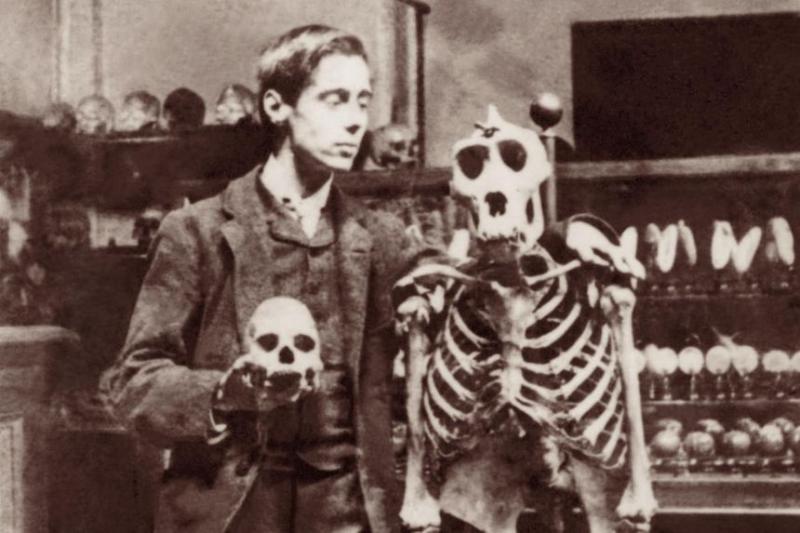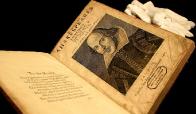‘The Young H.G. Wells’ Review: The Original Futurist
By: By Heller McAlpin



Does anyone read H.G. Wells anymore? The question has been asked periodically since his death in 1946, and the answer is invariably a qualified yes. Of Wells’s more than 100 books, his best known remain his groundbreaking early science fiction, including “The Time Machine” (1895) and “The War of the Worlds” (1898), which paved the way for generations of fantasies about time travel, future dystopias, and alien attacks. The majority of Wells’s prescient social, scientific and political commentary and his scores of issue-driven novels are no longer widely read, yet the prolific author who was called “the man who invented tomorrow” remains a household name.
This is due in part to his visionary forecasts: Long before World War I, Wells pointed out the allure and dangers of nationalism and technology and anticipated many of the dark developments of the 20th century, including chemical and tank warfare and the atom bomb. His once-radical championship of a league of nations, sexual freedom, birth control, and universal education and healthcare have also earned him sustained relevance in ongoing debates about what constitutes social progress.
It is ironic that for a man who apparently left no idea unwritten, his life and causes now spark more interest than his books. Right through the last decade, Wells has been the subject of numerous biographies, documentaries, articles and even a wonderful biographical novel, David Lodge’s “A Man of Parts” (2011). Turkish-British writer Elif Shafak offered a smart reassessment in this year’s PEN H.G. Wells Lecture, “How the 21st Century Would Have Disappointed H.G. Wells.”
Claire Tomalin’s short, engaging biography “The Young H.G. Wells: Changing the World” is a welcome addition to the conversation. Ms. Tomalin, the author of lives of literary titans including Thomas Hardy, Charles Dickens and Jane Austen—as well as her own recent memoir, “A Life of My Own (2018)—cites Wells’s delightful two-volume “Experiment in Autobiography” (1934) as a spur to her renewed interest. (Wells later augmented “Experiment” with a juicy postscript about his many love affairs, which was published posthumously as “H.G. Wells in Love” in 1984, a respectful 38 years after his death.)
Ms. Tomalin’s goal here is not a monumental biography of record. Instead, she focuses on the first half of Wells’s life, and limits her scope to the books he produced between 1895 and 1911—which she maintains represent his best work. She is certainly not the first to argue that Wells’s later work—with the exception of his autobiography and the enormously popular “Outline of History” (1920) and “A Short History of the World” (1922)—was not up to the caliber of his early efforts.
George Orwell made such a case shortly after the death of his boyhood literary idol: “We value H.G. Wells for Tono-Bungay, Mr. Polly, The Time Machine, etc. If he had stopped writing in 1920 his reputation would stand quite as high as it does: if we knew him only by the books he wrote after that date, we should have rather a low opinion of him.” Ouch. Orwell, 37 years Wells’s junior, contended that the work of many writers deteriorates as they grow older. Sadly, Orwell did not live long enough to test this theory himself: He died of tuberculosis in 1950, at the age of 46.
“The Young H.G. Wells,” which assesses Wells’s accomplishments and tribulations in the context of both his time and ours, is driven by a desire to understand how he managed to overcome so many obstacles to accomplish so much. In order to answer this question, Ms. Tomalin reconstructs Wells’s remarkable path—“charge” is more like it—from inauspicious beginnings to a position of affluence and influence.
Born in 1866 into what he deemed in his autobiography “a needy shabby home” and “not a highly educative atmosphere,” Herbert George Wells was the third son of two former servants. His parents had met at a large country house called Uppark, where his mother, Sarah, was a lady’s maid and his father, Joseph, a gardener and talented cricketer. By the time Bertie, as he was called, was born, his family lived in the basement of an unsuccessful china shop they had bought in Bromley, Kent, later a London suburb. After his father suffered a debilitating accident and the shop failed, his mother returned to Uppark as head housekeeper.
Sarah Wells’s ambitions for her three sons were limited; upon reaching 13, each in turn was apprenticed to a draper. But Wells hated everything about it—the loss of freedom, the lack of intellectual stimulation, the dearth of fresh air and physical activity. He had become a passionate reader during two long convalescences, first in the Wellses’ basement flat with a broken leg at age 7, and later in an attic room in the servants’ quarters at Uppark after he became desperately ill in his teens with hemorrhaging lungs and a badly bruised kidney. He later wrote that his time at Uppark, with access to good medical care and books such as Plato’s “Republic,” changed his life.
Ms. Tomalin paints a vivid picture of the upstairs-downstairs world of England’s class system, and how Wells’s experiences at Uppark shaped his views on the importance of a more just society. His formative years also provided background for novels such as “Love and Mr. Lewisham” (1900) and “Kipps” (1905), and essays like “This Misery of Boots” (1905), in which he asserted that socialists had a better way to address society’s inequalities, down to inferior footwear.
Throughout her book, Ms. Tomalin marvels repeatedly at Wells’s remarkable intelligence, drive and discipline, and wonders how he managed to juggle studying, teaching, writing—along with fun and friendships. “With a mind exceptionally alert to new possibilities,” she writes, “he was always ready to set off on fresh paths. Taking on too much was the way Wells lived his life.”
At 18, after years of scrambling for an education as a pupil-teacher in several mediocre boarding schools, Wells landed a three-year scholarship at what would later be known as the Royal College of Science in South Kensington, where he was taught biology by Thomas H. Huxley, a friend of Darwin and ardent evolutionist who stressed the importance of accurate observation and logic. It was a lesson that hit home with Wells. Ms. Tomalin writes that, “although he did not become an academic scientist himself, he learned to look and think clearly, and to write precise descriptions not only of what he saw before his eyes but also of the extraordinary things he imagined.”
During his science studies, Wells met and fell in love with his cousin Isabel, with whom a long, sexually frustrating six-year courtship was followed by a not very long, sexually frustrating marriage. By 1894, Wells was cohabiting with a 20-year-old pupil, Amy Catherine Robbins—whom he called Jane because she didn’t like the name Amy and he didn’t like the name Catherine. Jane was bright and, like Wells, willing to buck conventions. Yet it seemed even to contemporaries that she was alarmingly willing to let Wells call the shots. After his divorce came through, they married, had two sons, and stayed married through her death from cancer in 1927. But quite early on, Wells, who later noted his reputation as a “Don Juan among the intelligentsia,” persuaded her to accept an arrangement which freed him to pursue other romantic interests. Two notorious affairs resulted in children (with, most scandalously, Amber Reeves, the young daughter of friends, and Rebecca West); several others resulted in bad feelings; and nearly all resulted in novels. Jane stuck to him through the lot, even buying baby clothes for Amber’s daughter.
Ms. Tomalin dutifully untangles Wells’s wildly complex affairs (which got him into his worst messes in his 40s, midlife-crisis time) and traces their echoes in his series of largely autobiographical “discussion” novels about how relations between the sexes were changing with the times. Rebecca West’s biographer, Victoria Glendinning, notes sharply in her introduction to the 1986 Hogarth edition of Wells’s “Marriage” (1912) that “The messages that come out of [these novels] are contradictory, since Wells had contradictory ideas of what he wanted women to be: chaste wives and mothers, passionate mistresses, frank comrades.” Incidentally, it was 20-year-old Rebecca West’s harsh review of “Marriage” that led to her choppy 10-year affair with Wells—a rare instance in which a critic’s pan has spawned romance. But this much-chronicled relationship is beyond the purview of Ms. Tomalin’s book.
Even so, just as Wells crammed a lot into his full life, Ms. Tomalin crams a lot into this short biography. Occasionally, like a museum curator torn between arranging an exhibit chronologically or thematically, Ms. Tomalin opts for a mix, and the narrative lines get tangled. Too many precious pages are devoted to the history of the socialist Fabian Society, and to Wells’s relationship with its early members, Beatrice and Sidney Webb (founders of the London School of Economics). Wells resigned his membership in 1908, in part because of the scandal caused by his relationship with Amber Reeves.
Given the time and space constraints of Ms. Tomalin’s project, some gaps are to be expected. Even so, a look into a few of Wells’s disappointing later books might have strengthened her argument about the superiority of his earlier work. Ms. Tomalin, an astute literary critic, acknowledges that even his best books would have benefited from another draft: “Perfecting his novels was rarely his way, because he was always ready to be distracted by a new idea that presented itself,” she comments. One can’t help wondering whether Wells was increasingly distracted by his overstuffed life—which included friendships with Winston Churchill, George Bernard Shaw and Henry James. Or whether his novels became too didactic, vehicles for his political and social agendas. Was the diminution of his talent, as Orwell suggested, a matter of age? Ms. Tomalin (at 88) doesn’t weigh in. But the drop-off in quality wasn’t as abrupt as she or Orwell suggest. “Mr. Britling Sees It Through” (1916), Wells’s novel set in Essex during World War I, surely deserves a place among the keepers.
Ms. Tomalin segues nicely from a brief account of the demise of many of Wells’s friendships to a necessarily brisk overview of his later years and the tributes that followed his death. Her own tribute is full-hearted. “He never lost his enthusiasm for revolution and republicanism,” she writes. “He wanted to reorganize the world so that everyone could enjoy it, and, if he did not succeed in that as well as he had hoped, he gave his superabundant energy to speaking and writing for the cause.” Her book makes a strong case for Wells’s enduring importance.
—Ms. McAlpin, a frequent contributor to the Journal, also reviews books regularly for NPR.org, the Los Angeles Times and the Christian Science Monitor.
Tags
Who is online
111 visitors


Where does he stand in the land of fiction?
The book is:
The Young H.G. Wells : Changing the World
By Claire Tomalin
Penguin Press
272 pages
Thanks for posting this. I am definitely putting this on my to read list.
A cursory search came up with a dozen biographies of the honorable Wells, there will surely be another dozen or so to come. As with history, revisionism is not a bad word no matter how often negationism tries to make it so.